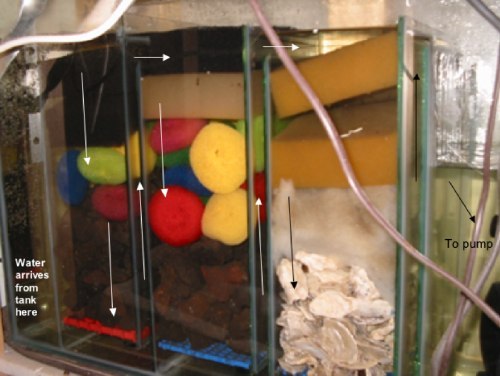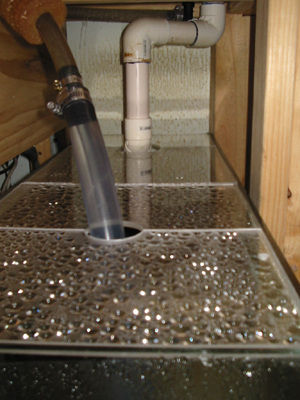by Glenn Barrett
Baffle filters are undertank (normally) installations that require an overflow outlet to be installed in the tank. An above tank baffle filter would also be possible, though the design would have to be slightly different. Baffle filters have advantages over conventional tricke systems in that they are significantly quieter than the wet & dry filters and they have compartments. The compartmentation means waters can be forced to flow through any substrate. This substrate may be involved in mechanical filteration, or may be involved in some kind of chemical filtration.
Here’s an annotated photo of the baffle filter:

Water arrives in a “dump compartment” on the left hand side of the photo. The distortion visible in the water is the bubbles from the water arriving. The glass divider on the right of this section is lower sealed at the base and water flows down through the filter media in the adjoining compartment. In the baffle filter above the adjoining compartment contains sponges, scourers and scoria, at the base the media is held in by a coarse red plastic grill. The water then flows up through a narrow channel towards the next compartment. It then descends again, through a compartment that contains the same media as the first. If the tank contains larger fish, coarser mechanical filters would be best in the first compartment. The water then again flows upward into a third and final compartment. In our example above the compartment contains finer sponges, filter wool, to polish the water, and oyster shells for buffering.
The water then empties into a collection sump. In this sump a pump sits returning water to the tank.

The entire system is enclosed with lids to prevent evaporation.





 This topic is locked
This topic is locked



